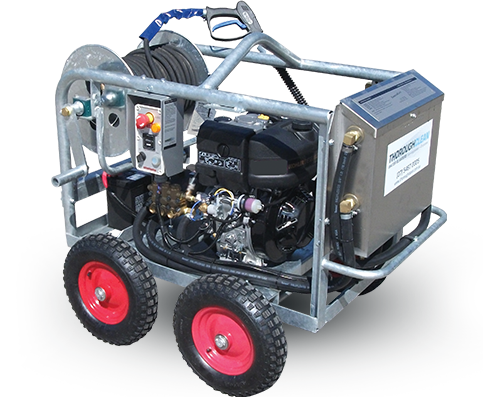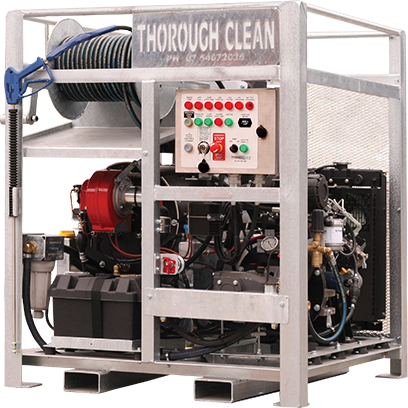Why do high pressure cleaners work?
Anyone who’s used a high pressure cleaner before will know they work, and they work well. Why is that the case though? This article explores the physics and components that make your favourite cleaning machine bust dust and rust so well.
Why high pressure cleaners get things cleaner: Physics and chemistry.
There is a very important molecule that enables pressure washers to wash. It’s called dihydrogen monoxide (water). Water has very interesting chemical properties that have earnt it the nickname “the universal solvent”. It is made up of a covalent bond between hydrogen (a proton donor) and hydroxide (hydrogen and oxygen: a proton acceptor).
Proton donors are what allow acids to break down molecules as they readily bond with other molecules. And bases do more or less the same thing with hydroxides, but via accepting protons rather than donating.
Detergents also help in this process if you use them, generally because they don’t disolve well in water and therefor separate the grime.
The next addition to this cleaning equation is energy, specifically kinetic energy. That may sound somewhat sciency, but it’s actually very simple.
At a very basic level, the theory behind this is that if you shoot something at a very high pressure at something else, that something else will subsequently move. If you’ve ever owned a newtons cradle you will have seen this process in action.
For this same reason it is always a good idea to test the pressure washer on an unimportant area to make sure the pressure isn’t enough to damage the surface you’re trying to clean.
But how does it do all that? The parts.
The parts that set this process in motion are actually somewhat simple. High pressure washers are basically a water pump powered by a motor (usually electric, but also petrol or diesel).
That motor is operated by a trigger on the nozzle or gun, which causes it to shoot water at the surface you’re trying to clean at high speeds using kinetic energy to blast the dirt away.
The water itself generally comes from a regular old tap but some will use a dedicated water tank for use in hard to reach places.
These are a more complete list of the components.
- Water inlet: A connector that receives water from the hose or tank.
- Motor: Most of the less serious ones are electric, but many of ThoroughClean ones are petrol or diesel powered.
- Water pump: If you’ve ever had to blow up an air mattress before, you will know how they work. The chamber expands, causing a vacuum and forcing air (or water) into it. It then contracts and causes pressure which propels the water out the other side. Another helpful analogy may be of what happens when you shoot a water pistol.
- Cleaning Attachment: This simply alters how the water will be directed, and fine tunes the high pressure cleaner for specific cleaning tasks.
Choose ThoroughClean for High Pressure Cleaners Australia!
Here’s a video to show you why:









